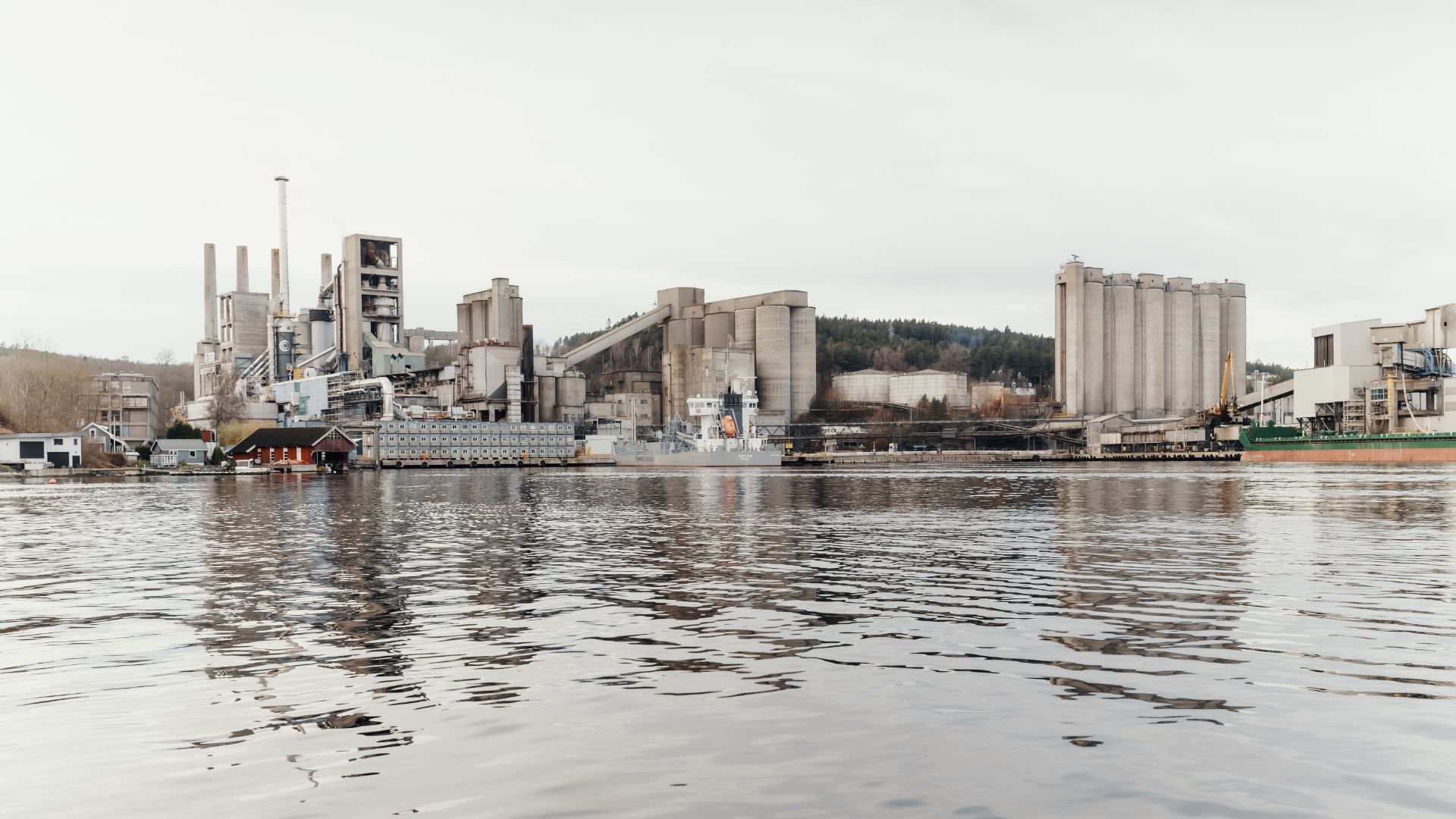According to the World Economic Forum, if the cement industry were a country it would be the world’s third or fourth largest emitter of carbon dioxide (CO2) emissions, accounting for 8 percent of all global emissions or 1.6 billion metric tons of CO2. Using renewable energy and alternative materials are helping to cut the industry’s carbon footprint, but more action is needed if the world is going to meet its climate targets.
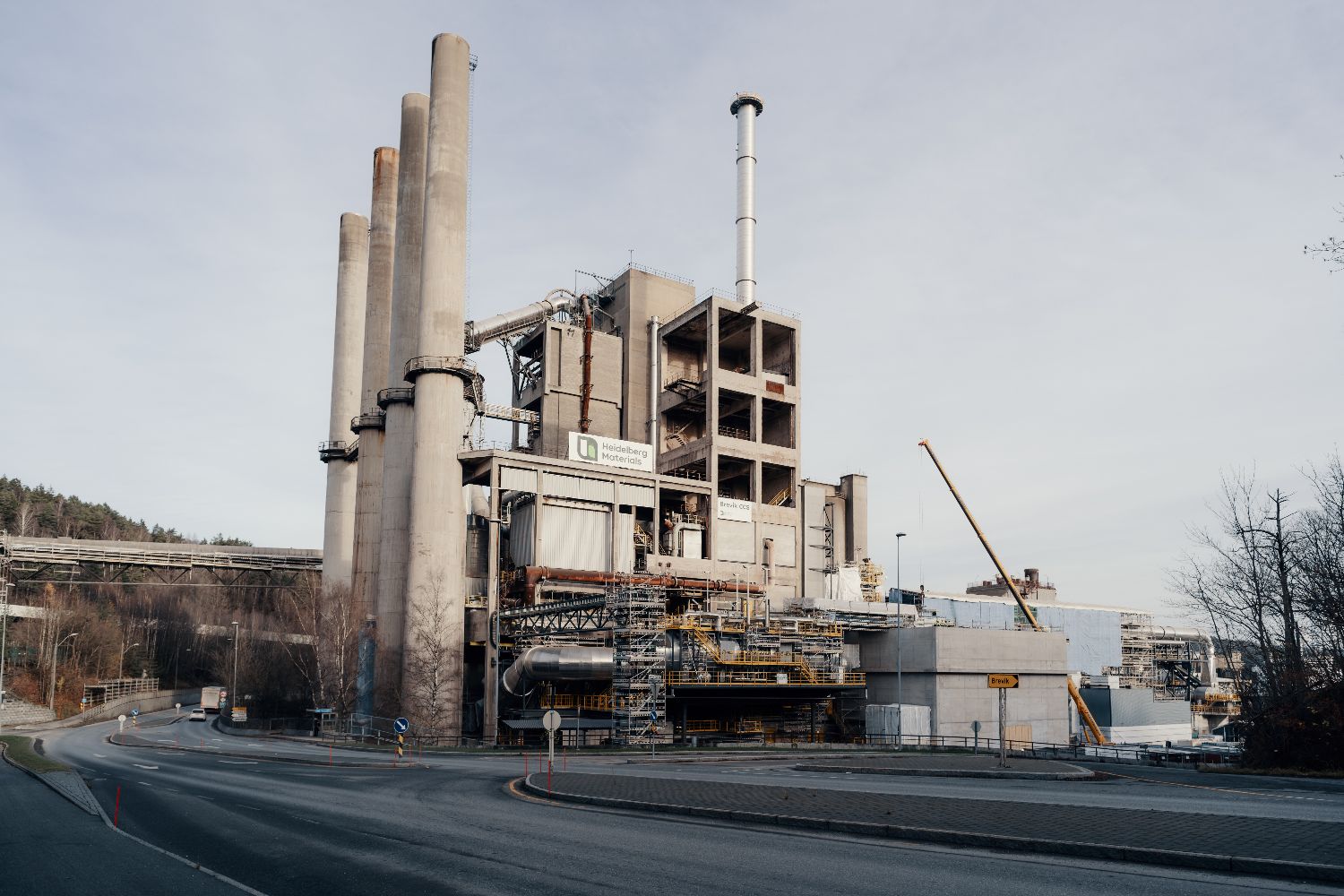
International building materials company Heidelberg Materials is stepping up to the challenge with the world’s first carbon capture and storage (CCS) facility for cement at their production site in Brevik, Norway, near the North Sea. Cement is the main ingredient in concrete, the second most consumed resource in the world, and a huge share of its emissions is unavoidable due to its production process – in particular, during the chemical reaction as the material is heated in a kiln. CCS is a process designed to capture and store these unavoidable CO2 emissions that would otherwise be released into the atmosphere. And the groundbreaking Brevik facility, which will soon be operational, is a major milestone for the industry and for Heidelberg Material’s goal of having an entirely climate-neutral portfolio.
Proven compressors for carbon capture
With technologies from SLB Capturi (a joint venture between Aker Carbon Capture and SLB) and Everllence, the new Brevik CCS facility is designed to capture around 400,000 metric tons per year – using an amine-based solvent to remove CO2 from flue gas.
Because this is the first time the process is being applied to industrial-scale cement operations, the use of proven technology is key to its success. While SLB Capturi, the EPC contractor for the capture plant, CO2 conditioning and intermediate storage, provides the carbon capture system, Everllence, as a supplier to SLB Capturi, is responsible for the huge compressor train in the middle of the facility. It is an electrically powered RG 63-7 compressor, which has over 30 years of proven use in the chemical industry.
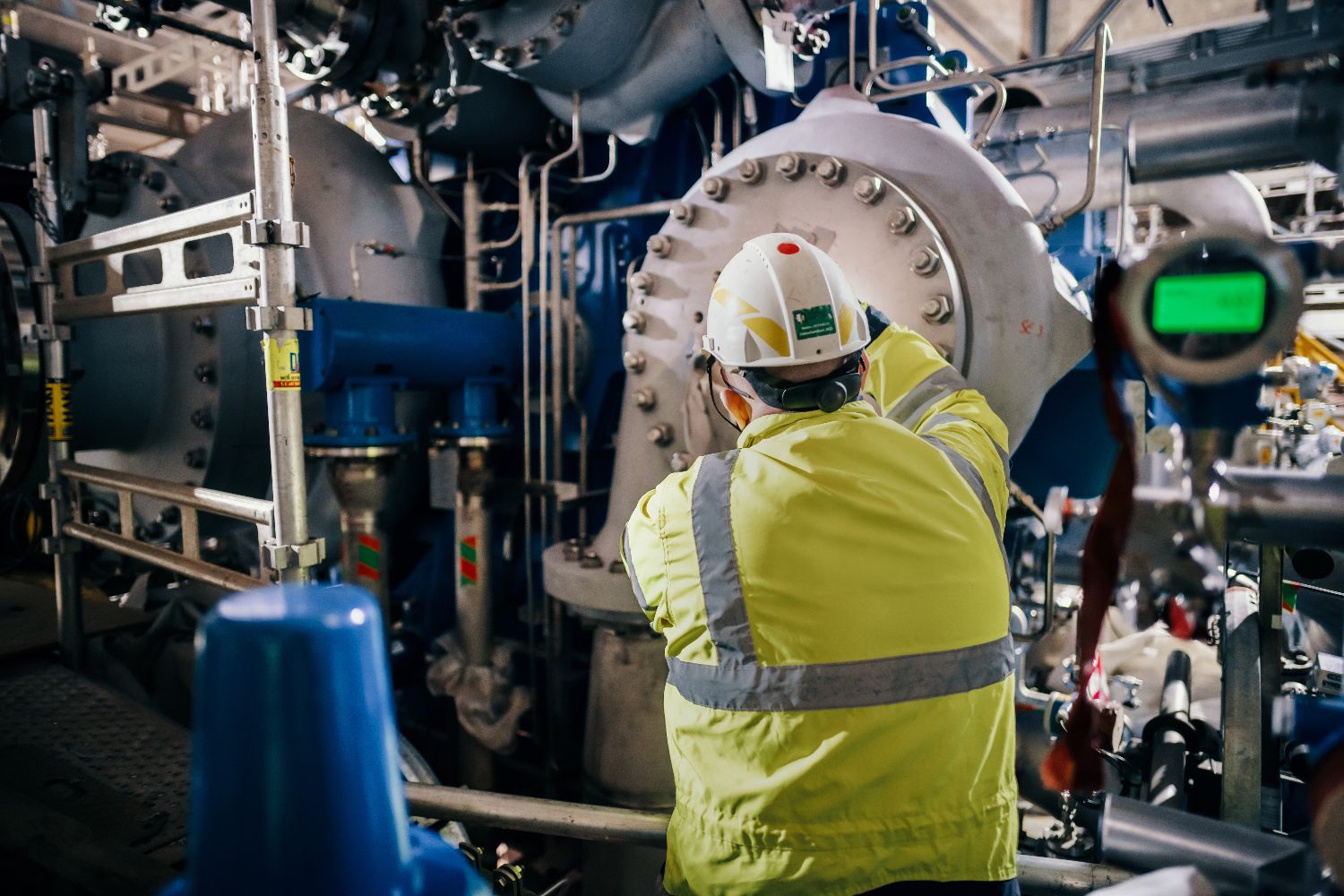
Enter the narrow building that houses the compressor train, and you realize what an impressive feat of engineering it really is: extraordinarily compact, despite the seven stages required to compress CO2 to 70.4 bar before it’s liquefied.
Carbon capture heat recovery and the Northern Lights
Inga Askestad, Technology Manager for Brevik CCS at SLB Capturi, says Everllence was the natural choice of partner in Brevik. “Everllence is the world leader in compressor technology. We needed an experienced partner because of the advanced technology used in this project, including an innovative heat recovery system.”


During this compression process in Brevik, as temperatures increase, heat is recovered and used in the capture process. The facility is the first in the world to use this state-of-the-art heat recovery system, developed by SLB Capturi in collaboration with Everllence. This innovative approach increases the energy efficiency of installed CCS plants. All in all, at Brevik, it provides around a third of the facility’s heat demand, reducing the CCS systems energy costs and further lowering its own impact on the environment.
Of course, capturing carbon is only part of the process. Once liquefied the captured emissions will be transported to an underground storage facility as part of the Northern Lights project, an open-source infrastructure for CO2 transport and storage. The emissions are then injected under the North Sea seabed.
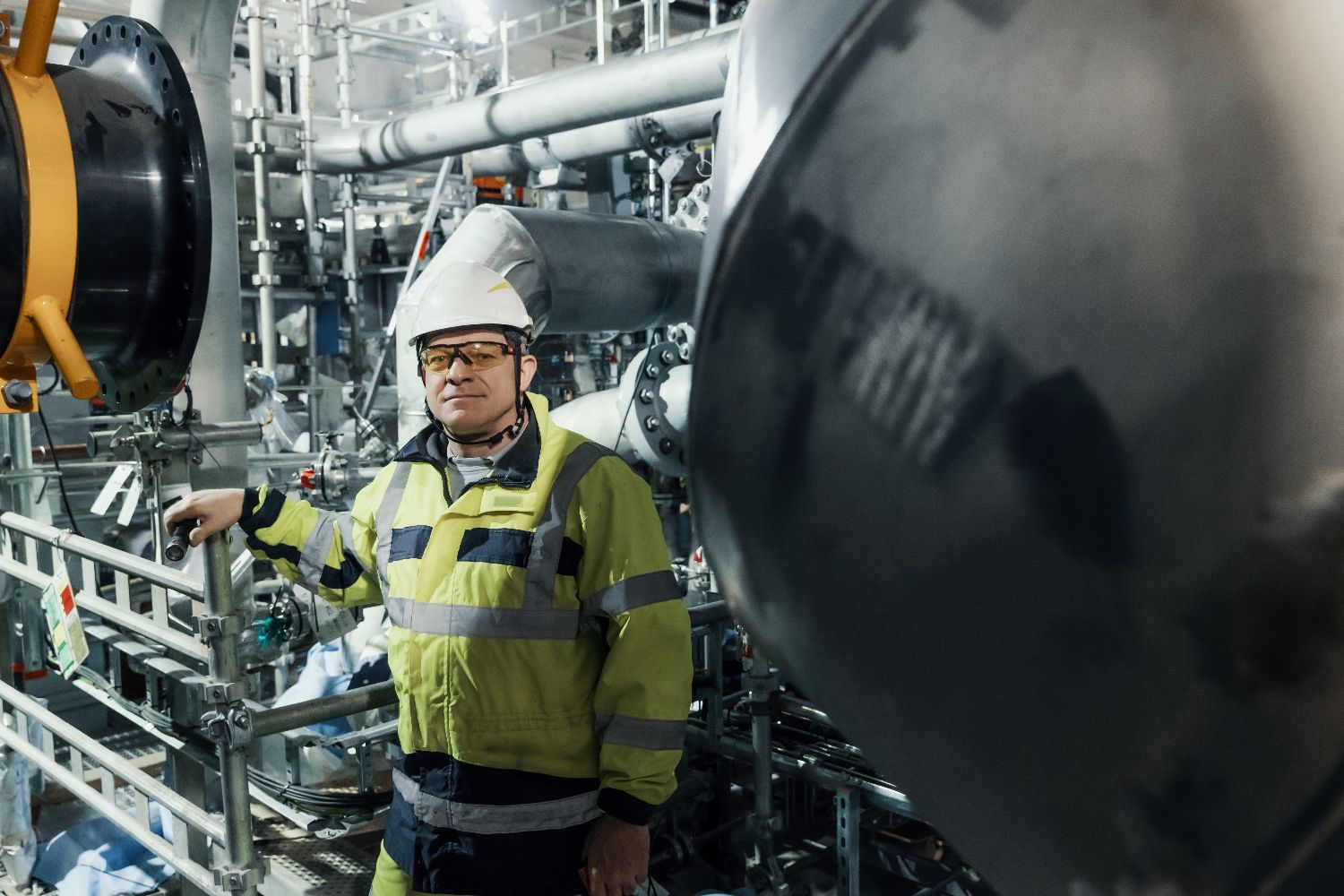
Partnerhips and safety for sustainable cement
Because the main parts of Brevik’s compressor train and gearbox are built at Everllence’s facilities in Berlin and Oberhausen, and then mounted together on site in Norway, to assemble a huge train in such a narrow space presented a challenge. “This is a demanding project,” says Everllence’s Site Manager Eric Szalai. “The compressor train occupies a limited space. It would be both difficult and time consuming to change something already mounted, so we needed a detailed plan for the entire construction process.”
In Oberhausen, Everllence had used digital twin modeling and dynamic process simulations to identifiy opportunities for reducing cold start times. This digital-based engineering approach holds huge potential for streamlining operations and minimizing energy consumption in cement plants.
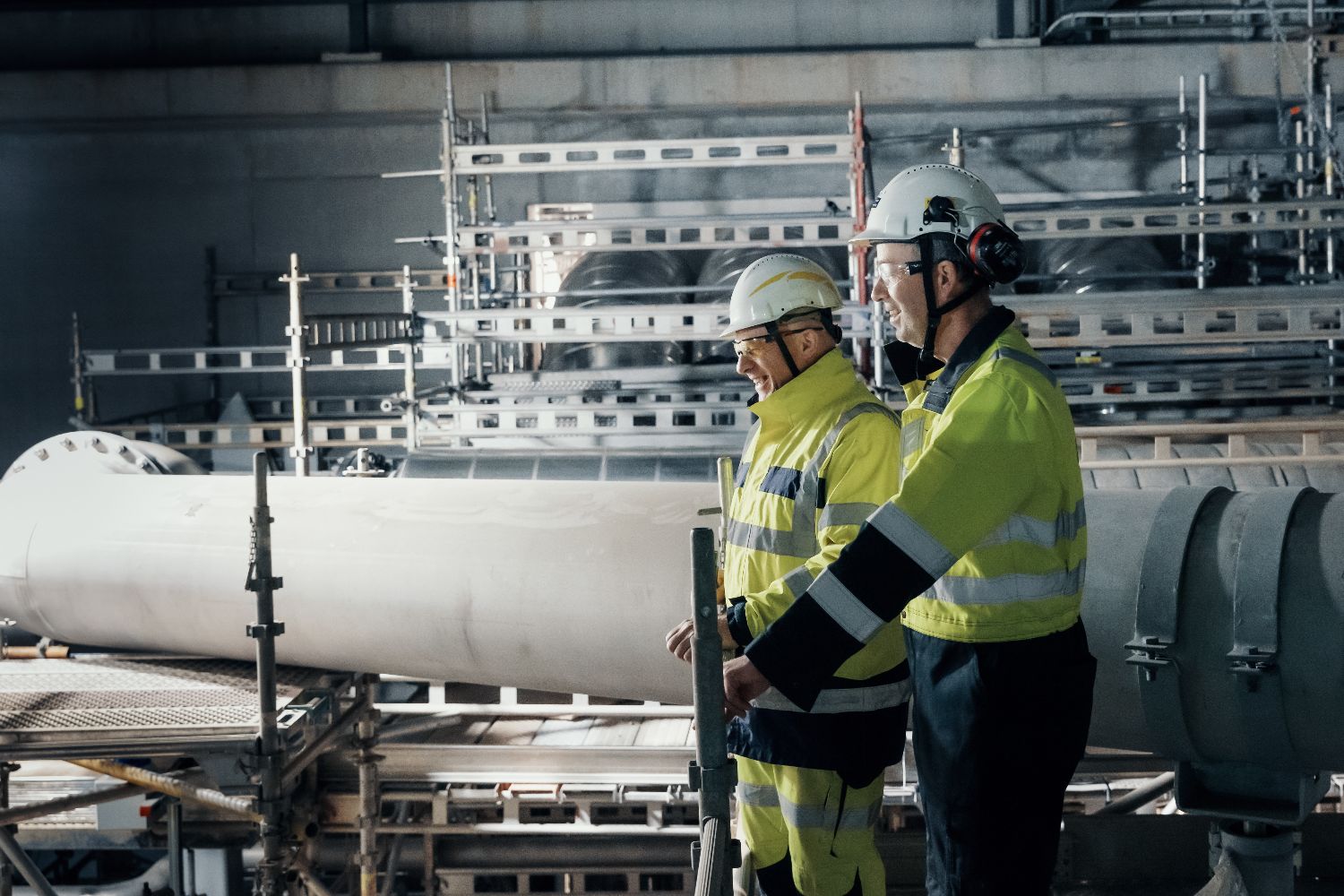
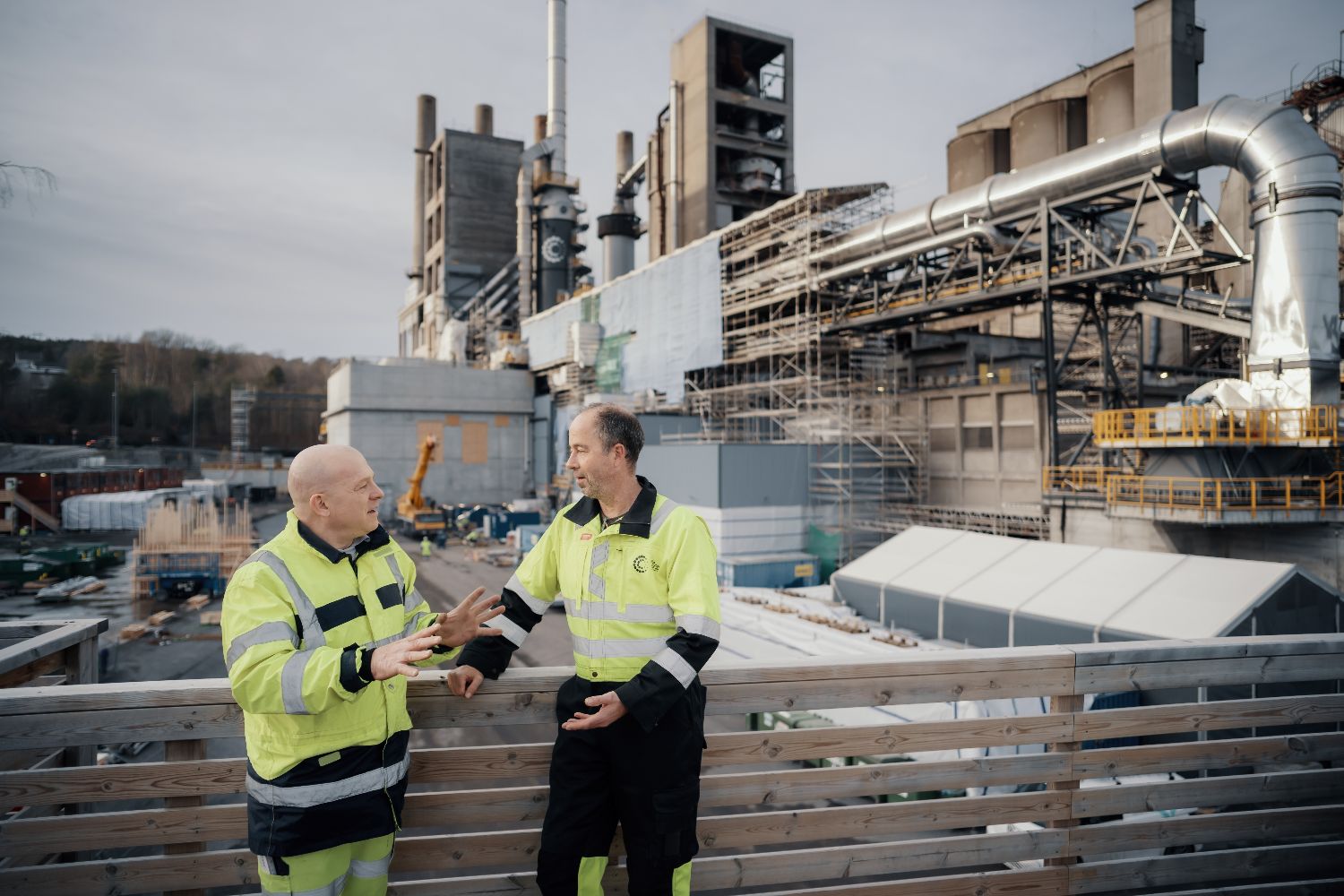
The door is open for CCS
Kristian Gløersen is a mechanical engineer working for SLB Capturi on the CCS project, an opportunity which he relishes. “It feels amazing to be a part of a project that is the first of its kind in the world,” he says. Gløersen describes the work with Everllence as being smooth and pragmatic. “There is no need for any kind of ‘decision hierarchy’ between us; we discuss plans and possible issues until we find the best solution.”
The success of the CCS facility in Brevik is opening the door for more carbon capture projects to be paired with industrial processes worldwide, which account for nearly a quarter of all CO2 emissions. Moving to more commercial-scale projects will also cut costs and lead times for the technology in the long run. For example, with the Brevik project alone Everllence has been able to optimize their compressor train to a standard platform size for CCS applications, and are developing further tools with artificial intelligence and remote monitoring to reduce maintenance times and costs.
Building the future of the construction industry requires concrete to become more sustainable than it is today. To achieve this, some ingredients may have to be replaced with alternative materials. But cement, a key ingredient, will have to be made more sustainable using carbon capture and storage (CCS). Since the global use of concrete is expected to increase, this makes CCS technology even more crucial.
About the author
Nils Lindstrand is a business and technology writer based in Stockholm, Sweden. His work has been published in a number of Swedish and international magazines.
